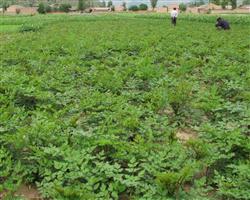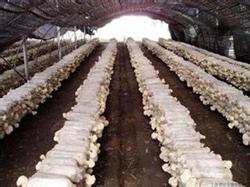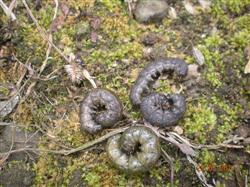How to cultivate Angelica sinensis?

How to cultivate Angelica sinensis? Please introduce in detail the dried root of Angelica sinensis, also known as Qin Gui, which is a commonly used traditional Chinese medicine with the effects of tonifying blood, activating blood circulation, relieving pain and moistening intestines. Mainly produced in Gansu, Shaanxi, Yunnan, Sichuan and other provinces, cultivated in most areas of Shaanxi. (-) the morphological characteristics of Angelica sinensis are perennial herbs, 0.4-1 m high. Roots fleshy, conical, mostly branched after cultivation. After planting in the second year, the stem is erect, 1.2 meters high, light purple (a few are light comprehensive color). The leaves are 2 Mel 3-pinnately compound, with a sheath clasping stem at the base of the petiole. Terminal compound umbel, florets white. The fruit is oval and double hanging, and the two petals are dehiscent after maturity. The florescence is from June to July and the fruiting period is from August to September. (2) the growth habits should be classified as alpine plants, which requires cool and humid climatic conditions, and has the characteristics of being fond of fertilizer, afraid of waterlogging and high temperature. when cultivated in areas with low elevations, it is not easy to pass the summer, and it is easy to die if the temperature is too high. The seeds germinated well in the range of 10 ℃ and 25 min, and the seeds emerged in 15 days. Angelica sinensis has the phenomenon of early bolting, which should be overcome in production, generally raising seedlings and transplanting, and can be picked and dug in the third year. (3) cultivation techniques 1. Selecting and preparing land to choose a gentle slope from south to north, half shady and half sunny requires loose soil and good structure. Lesser Fullness of Grain turned deeply in front of him once and broke the clod as a seedbed. The bed was 1 meter wide and the length varied with the terrain. The drainage ditch between the bed and the bed is 30 cm wide and 15 mi 20 cm deep. The planting land should be deeply ploughed and fine raked, and the bottom fertilizer should be applied to 2500 Mu, 5000 kg per mu, which should be turned evenly with the same soil as a high border, with a width of 1.2 Mel 1.5 meters. The drainage ditch between the borders is 30 cm wide and 20 cm deep. two。 Seedling raising and transplanting are often used in the production of propagation. The sowing date should be determined according to the altitude and air temperature, about July in Gansu, Sichuan and Yunnan, and about August in Shaanxi. Sowing method for sowing, seeds mixed with ash scattered on the border, slightly suppressed, covered with a small amount of fine wet soil, covered with grass, to achieve light, moisturizing, seedling age of no more than 110 days. The sowing amount is 4m / mu and 5kg / mu Transplanting is divided into winter planting and spring planting, with a row spacing of 25 cm X 25 cm. Spring planting before and after the Qingming Festival, winter planting is suitable for transplanting after Cold Dew and before Frosts Descent. The seed direct seeding method can be used in winter, spring and autumn, and the early bolting of Angelica sinensis can be controlled, in which winter direct seeding is better, but the yield is not high. 3. Field management (1) Seedling management must keep the soil moist after sowing to facilitate seed germination. Pick loose cover grass for about 40 days. When the seedling height is about 3 cm, loosen the soil once, immediately pull out the weeds, after the summer day, choose the cloudy day to remove all the cover grass. Pay attention to drought prevention and drainage at seedling stage. (2) from Cold Dew to Frosts Descent, when the temperature dropped to about 5 ℃, when the leaves of the seedlings began to wither, dig up the seedlings, tie up some soil into small handfuls, dry them to remove water and store them in cellar or heap. The seedlings are too old to be stored. When storing them, pay attention to placing them facing outward and root inward. (3) under normal conditions, the seedlings should be replanted with small seedlings with soil in overcast and rainy days after the seedlings came out about 20 days after transplanting. The seedlings were fixed about 3 months after planting, and the diseased seedlings and weak seedlings were removed, and 1 plant was retained in each hole. (4) weeding in mid-May, when weeding is carried out for the first time, it is appropriate to hoe shallowly and do not bury seedlings in the soil. In the middle of June, the second time of weeding, deep hoe can be used to promote root development. (5) after bolting and transplanting, the flowering and fruiting plants in the same year are called early bolting, and the roots can not be used medicinally, so they should be pulled out completely. (6) topdressing is a fertilizer-loving plant, and phosphorus, potassium and ammonia should be applied during the leaf peak period in late June and the root growth period in early August. 4. Disease and pest control (1) after transplanting, the peak of the disease is in mid-April, mid-June, early September and early November, which is harmful to the roots, and most of the underground pests are beneficial to the disease. Control methods: ① is mixed well with 3911 granules 3 kg / mu plus 15kg of fine soil or 0.5kg of methyl isophosphates emulsion and 2.5kg of water sprayed on 15kg of soil, sprinkled and turned into the soil; ② is irrigated regularly with broad-spectrum long-acting insecticides, 250g of carbendazim gel suspension per mu or 600g of thiophanate per mu plus 150kg of water, 50g of irrigation diluent per plant, irrigated once in early May and mid-June. (2) Sclerotinia sclerotiorum is harmful to leaves, which is easy to occur under the condition of low temperature and high humidity, and the damage is more serious from July to August. Prevention and treatment methods: non-continuous cropping, 1000 times 50% methyl thiazine was sprayed continuously for 4 times every IO day in the first half of the month. (3) the insect pests are mainly caused by golden needle adults and small earth tigers. Control method: root out the grass inside and outside the field, pile it into a small pile, change the fresh grass for 10 days, and kill it with poison bait. (4) after harvesting and processing Angelica sinensis, the aboveground part was cut off in the first 15 days of that year, and the maturity was accelerated by exposure to the sun. When digging, strive to keep the root system intact, shake the soil, pick out the diseased root, scrape off the residual stem, place it in a ventilated place, wait for the water to evaporate, after the root strip is soft, tie it into small handfuls according to specifications, pile them in bamboo baskets, smoke and smoke with wet grass as fuel, avoid using open fire, after 10 days, when the skin is golden, cease fire and wait for it to dry. Angelica should not be dried in the sun or in the shade when processing. (5) for Angelica sinensis with seed retention techniques for seedling cultivation and transplanting, at the end of autumn, the fertile soil, good plant growth, pest-free and shady areas were selected as the remaining seed fields, and the weeds were pulled out after the new leaves were issued in the second year. When the seedling height is about 15 cm, topdressing the root is carried out, and when the flower axis of Angelica sinensis is drooping and the seed epidermis is pink in autumn, it will be harvested and tied into small handfuls in batches. Hang in indoor ventilated, dry and smoke-free place, after full drying, threshing and storage. Angelica sinensis in direct seeding must create development conditions to promote early bolting and form seeds with full development, fullness and high maturity, but the seeds can only be used for direct seeding, not seedling and transplanting. Click to get more Angelica planting technology click to get more medicinal material planting technology
- Prev

How to grow hericium Erinaceus in plastic greenhouse?
How to grow hericium Erinaceus in plastic greenhouse? Please introduce that hericium Erinaceus is a kind of medium-and high-grade edible fungus with special flavor and high nutrition and health value. With the improvement of people's living standards, the sales market of fresh monkey head mushrooms is gradually expanding. Popularizing hericium Erinaceus cultivation can not only meet people's consumption needs, but also help mushroom farmers.
- Next

How to prevent and cure angelica rust?
How does Angelica control small land tigers? Please guide the tiger, also known as "ground silkworm", "black silkworm". It belongs to the family Lepidoptera. The angelica tigers are mainly small tigers and yellow tigers, and their harm and control measures are the same. The main results are as follows: 1. The damage to Angelica sinensis seedlings is caused by larvae, which is dormant during the day and out at night.
Related
- Fuxing push coffee new agricultural production and marketing class: lack of small-scale processing plants
- Jujube rice field leisure farm deep ploughing Yilan for five years to create a space for organic food and play
- Nongyu Farm-A trial of organic papaya for brave women with advanced technology
- Four points for attention in the prevention and control of diseases and insect pests of edible fungi
- How to add nutrient solution to Edible Fungi
- Is there any good way to control edible fungus mites?
- Open Inoculation Technology of Edible Fungi
- Is there any clever way to use fertilizer for edible fungus in winter?
- What agents are used to kill the pathogens of edible fungi in the mushroom shed?
- Rapid drying of Edible Fungi

